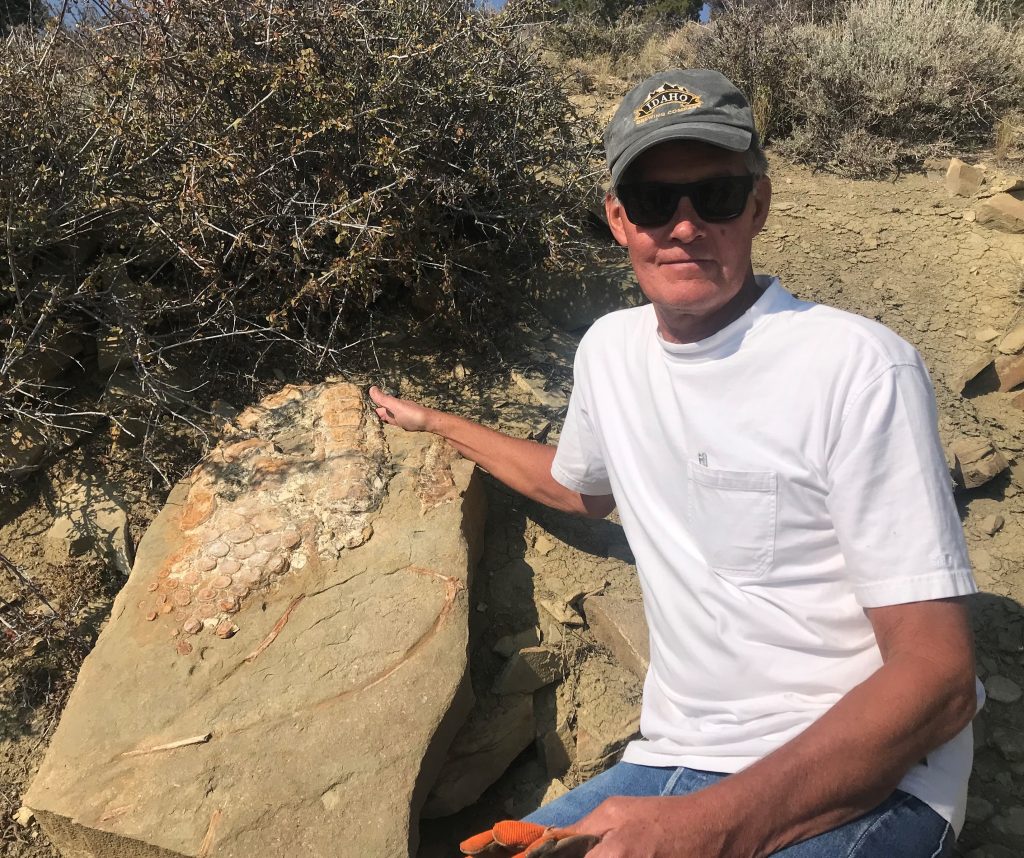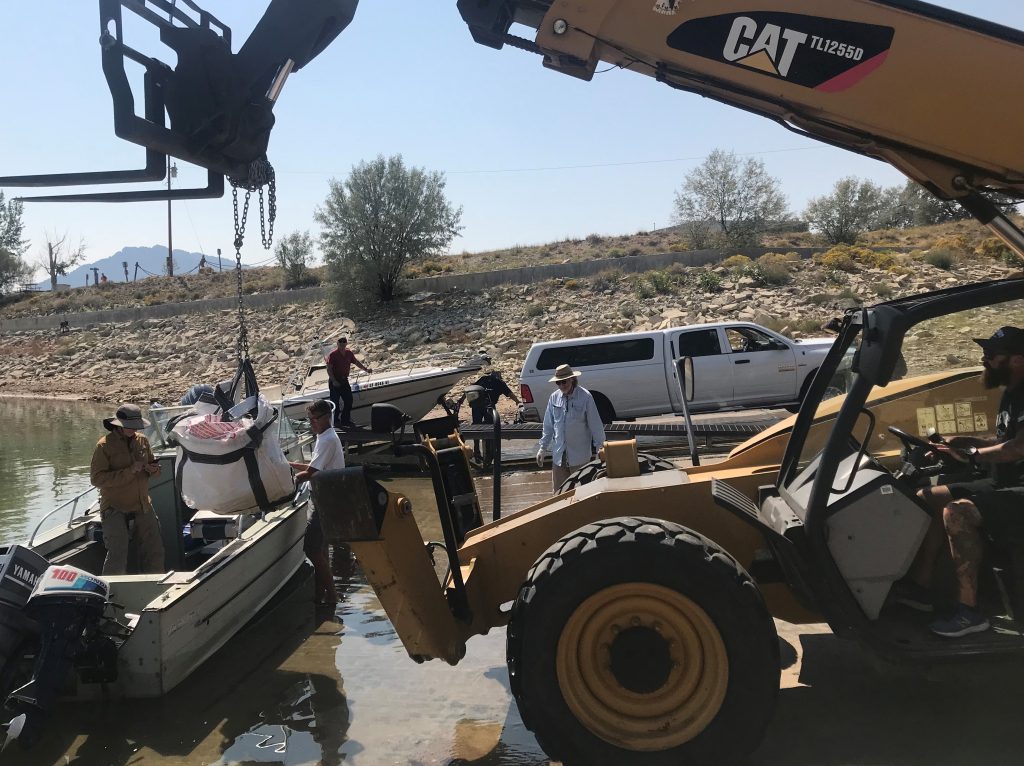Ancient Fish-Lizard Finds a New Home

October 5, 2021
VERNAL, Utah — Thanks to a team of paleontologists from Utah State Parks and several partner agencies, the fossil of a dolphin-sized “fish-lizard” called an ichthyosaur (ick-thee-oh-sore, meaning “fish-lizard”), has taken up residence at The Utah Field House of Natural History.
The fossil was discovered by Alan Dailey, from Hooper, Utah, while he was boating at Flaming Gorge in May of 2021. He left the fossil where he found it, snapped some photos, and then contacted paleontologists to give them its location.
“By Alan doing the right thing and reporting the fossil, an important, partially articulated ichthyosaur will now be available for marine reptile specialists to study,” Steve Sroka, Park Manager of the Utah Field House of Natural History State Park Museum, said.
The fossil includes the nearly complete and articulated forefin, 10 ribs, and 19 articulated vertebrae. It is one of the better ichthyosaur specimens to come from the state. A handful of previous finds have mostly consisted of isolated vertebrae. This particular ichthyosaur would have lived in an inland seaway in the area during the early part of the Late Jurassic epoch. Ichthyosaurs were dolphin-to-whale-sized marine reptiles that existed for almost 130 million years. The ichthyosaur found at Flaming Gorge was of dolphin size, and is actually quite similar to a dolphin, having a long snout with conical teeth, a streamlined body, compact fins, and a tail built for speed.
The sandstone where the ichthyosaur was found had also preserved fossils of oysters and squid-like belemnoids (extinct creatures related to modern-day squids) that lived in the seaway at the same time.
“It is not often you see an entire fin laid out in the rock like that — so it is fun to be able to imagine a fast-swimming ichthyosaur chasing prey through the warm seawater in our region so long ago.” Shared John Foster, a team member of the Utah Field House of Natural History.
The fossil collection team included Alan Dailey, paleontologists and volunteers from the Utah Field House of Natural History, two representatives of the U.S. Forest Service (which issued the permit for collection), and a Utah State Parks ranger who worked as a boat pilot. It took a team effort to wrestle the massive 400-pound sandstone block containing the fossil into a boat on the shoreline. From there, it was skillfully unloaded from the boat and gently set in the back of the museum’s truck by a forklift operator at Lucerne’s marina.
Now that the fossil safely resides in its new home, lab workers will carefully clear away the rock to better expose some of the bones of the skeleton. This will help paleontologists identify what species the Dailey ichthyosaur specimen is.
After some time in the lab, the fossil will be on exhibit at The Utah Field House of Natural History Museum.

If you found this blog entry interesting, please consider sharing it through your social network.